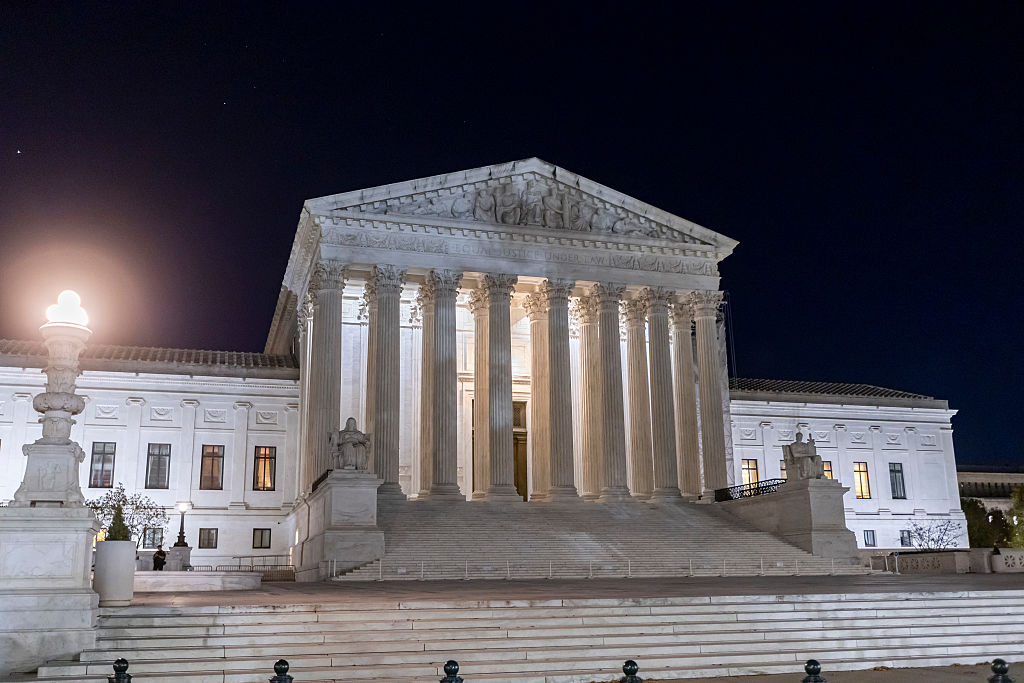



Loading the Elevenlabs Text to Speech AudioNative Player...
It might appear at first blush that the Supreme Court’s June 2 rejection of a Petition for Writ of Certiorari challenging Maryland’s 2013 ban of so-called “assault rifles” means blue-state bans of these and other controversial weapons are constitutionally secure. However, the Court has not decided any such thing; it has only deferred when that jurisprudential battle will be joined. Maryland’s law conflicts with clear Supreme Court precedent on the Second Amendment, and a future SCOTUS challenge to state bans of the AR-15 is inevitable.
The posture of the recent decision was simply that not enough justices agreed to hear the Maryland case of Snope v. Brown. Three conservative judges (Samuel Alito, Neil Gorsuch, and Clarence Thomas) agreed to hear the petition, but Justice Brett Kavanaugh withheld the necessary fourth vote. This might appear to some conservatives, especially Maryland gun owners who have been battling for their Second Amendment liberties for more than a decade, to be a betrayal. But in an accompanying statement, Kavanaugh explained his reasoning:
“Although the Court today denies certiorari, a denial of certiorari does not mean that the Court agrees with a lower-court decision or that the issue is not worthy of review.
“Opinions from other Courts of Appeals should assist this Court’s ultimate decisionmaking on the AR-15 issue. Additional petitions for certiorari will likely be before this Court shortly and, in my view, this Court should and presumably will address the AR-15 issue soon, in the next Term or two.”
Kavanaugh’s statement also made clear his view that the Maryland statute and related state bans of the AR-15 would not likely pass constitutional muster under the Second Amendment tests enunciated by the Court when it eventually takes up the issue:
“Given that millions of Americans own AR-15s and that a significant majority of the States allow possession of those rifles, petitioners have a strong argument that AR-15s are in ‘common use’ by law-abiding citizens and therefore are protected by the Second Amendment under Heller.
“Law-abiding citizens use both AR-15s and handguns for a variety of lawful purposes, including self defense in the home. For their part, criminals use both AR-15s and handguns, as well as a variety of other lawful weapons and products, in unlawful ways that threaten public safety. But handguns can be more easily carried and concealed than rifles, and handguns — not rifles — are used in the vast majority of murders and other violent crimes that individuals commit with guns in America.”
In a companion statement, Justice Thomas was even more critical of Maryland’s scheme and essentially scoffed at the Fourth Circuit Court decision in a withering, dismissive analysis. He summarized prior SCOTUS decisions regarding Second Amendment jurisprudence requiring the government to shoulder the burden of demonstrating its infringement of the right to bear arms is justified, concluding the Fourth Circuit had essentially circumvented those rulings:
“It is difficult to see how Maryland’s categorical prohibition on AR-15s passes muster under this framework … AR-15s appear to fit neatly within that category of protected arms. Tens of millions of Americans own AR-15s, and the ‘overwhelming majority’ of them do so for lawful purposes, including self-defense and target shooting.’
“The Fourth Circuit placed too high a burden on the challengers to show that the Second Amendment presumptively protected their conduct. And, its determination that AR-15s are dangerous and unusual does not withstand scrutiny.”
Thomas practically ridiculed the Fourth Circuit’s strained rationale for banning AR-15s by comparing them to nuclear warheads. An amicus curiae brief by Gun Owners of America and other gun rights organizations agreed with Justice Thomas’ derision of the lower court’s unconstitutional rationalizations: “The Fourth Circuit simply could not bring itself to uphold the People’s right to ‘keep and bear’ a large swath of those bearable arms — largely because: (A) these guns are scary; (B) the people demanded such laws and the Legislature responded; and (C) absent those laws, people could get hurt, discussed infra. With these new motivations, the Fourth Circuit created the worst possible manner ever devised to interpret a written constitution.”
The Supreme Court will almost certainly grant Certiorari in the future to a full challenge of state bans on so-called assault rifles (itself a hazy term to define, as hundreds of otherwise legal semi-automatic rifles with as much or more capacity for danger than the dreaded AR-15 are in popular and decades-long use). Though more state legislatures may feel emboldened by Kavanaugh’s current can-kicking of Snope to enact broad gun bans, the Second Amendment and its defenders are alive and well, not only on the SCOTUS bench but also in a string of solid precedents that clearly protect the right of the citizenry to bear arms.
Liberty Vault: The Constitution of the United States
Liberty Vault: New York State Rifle & Pistol Association, Inc. v. Bruen
